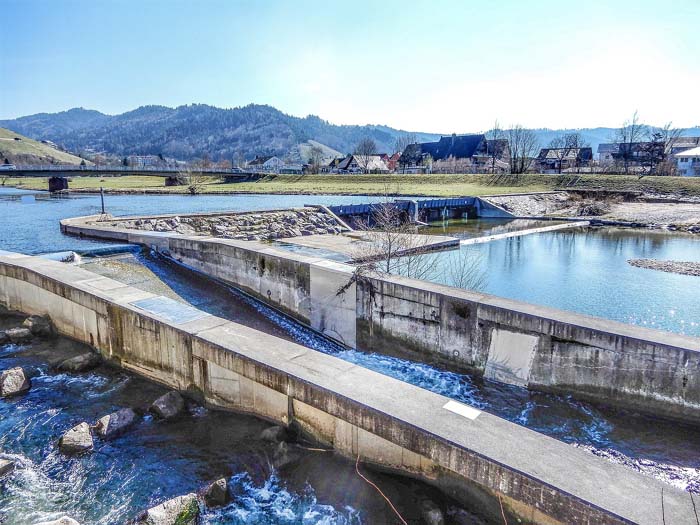
Turbidity is the degree to which suspended particles make the liquid appear cloudy or hazy, even when not visible to the human eye. Organic matter, clay, sediment, plankton, and silt are among the many possible components of these particles. Often, turbidimeters use Formazin Nephelometric Units (FNU) or nephelometric turbidity (NTU) as their units of measurement. Turbidity is a crucial metric in many fields, such as wastewater treatment, water quality monitoring, and environmental science. Health problems for aquatic ecosystems, stunted plant growth, and reduced light penetration are all consequences of increased turbidity in water, which threatens aquatic ecosystems. It also shows pollutants and contaminants that could harm humans if consumed.
Types of turbidity?
When very finely divided particles or solids suspended in a fluid make it appear hazy or cloudy to the unaided eye, we refer to this phenomenon as turbidity. The causes or sources of the suspended particles determine the type of turbidity. Here are a few common types:
Organic Turbidity
The presence of organic substances in the fluid causes this particular turbidity. Decomposing bacteria, algae, plants, and other microbes are all examples of organic matter. Soil erosion and human activities like wastewater discharge are two examples of these particles’ natural and artificial sources, respectively.
Inorganic Turbidity
Particles in suspension that are not organic are the cause of inorganic turbidity. The fluid may suspend minerals such as silt, clay, sand, or others, which constitute these particles. Industrial discharges, building activities, soil erosion, or mining operations are common sources of inorganic turbidity.
Biological Turbidity
When living things or their byproducts float about in a fluid, it becomes biological turbidity. You can find plankton, bacteria, algae, and other microbes here. Although biological turbidity occurs naturally in some aquatic habitats, it can be due to nutrient pollution that encourages the overgrowth of particular organisms.
Chemical Turbidity
The presence of colloidal or dissolved chemicals in the fluid can lead to suspended particles forming, causing chemical turbidity. Emulsions formed by oils or surfactants, colloidal suspensions of compounds such as silica or clay, or chemical reaction precipitates are all examples of what this category encompasses.
Anthropogenic Turbidity
Turbidity, also known as anthropogenic turbidity, can result from human activities. These can originate from a variety of sources, such as mining, deforestation, industrial discharges, construction, agricultural activities, or urban area runoff. Turbidity levels in natural water bodies can increase due to human activity. This has consequences for water quality and aquatic ecosystems.
The specific turbidity features in a given environment depend on variables like the fluid’s chemical and physical properties. Others are the source of the suspended particles and the makeup of the particles themselves. To keep water quality high and aquatic ecosystems intact, you must monitor and manage turbidity levels.
What are 2 causes of increased turbidity?
There are a number of potential reasons why water becomes more turbid, but two of the most common are:
Algal Blooms
A bloom of algae occurs when the number of algae in an aquatic environment suddenly increases. Conditions encouraging algae growth include calm water, plentiful nutrients (such as phosphorous and nitrogen), and high temperatures. Overpopulation of algae can lead to turbidity in water as a result of the high number of suspended algae cells. Another factor contributing to turbidity is the pigments some algae species produce, which color the water. Excess nutrients introduced to water bodies by industrial pollution, sewage discharge, or agricultural runoff can set off algal blooms.
 Sedimentation
Sedimentation
We refer to the sedimentation process when we stir up inert solids like clay, silt, or sand and leave them floating in the water column. Erosion from wave action and land runoff are examples of natural processes. Deforestation, mining, or building are examples of human activity. Water appears murky and cloudy because of sedimentation’s increased turbidity. This is due to light scattering and absorption.
The relationship between pH and turbidity
We measure two parameters in water quality analysis: pH and turbidity. Several environmental conditions might indirectly relate to these two values.
Regulatory Standards:
- Regulatory standards may specify permissible ranges for turbidity and pH, two crucial parameters in water quality assessment.
Human Activities:
- Pollutants introduced into water bodies by human activities, including urbanization, mining, and farming, can alter turbidity and pH. For instance, increased turbidity can be due to the introduction of nutrients and sediment into water bodies by runoff from agricultural areas. Chemicals released during industrial processes can also alter the pH of water.
Water Composition:
- The water’s composition can also affect the pH-turbidity relationship. For example, pH in natural water influences the stability of colloidal particles. This, in turn, influences turbidity. Turbidity is due to colloidal particles. These are tiny suspended particles in water.
Effect of pH on Turbidity:
- pH affects particle solubility in water, which in turn affects turbidity. The coagulation or precipitation of particles brought on by changes in pH can sometimes affect turbidity. For instance, particles can become suspended when the solubility of minerals or organic substances in water changes due to changes in pH.
- Furthermore, turbidity can be due to changes in pH. This, in turn, affects microbes in water. For instance, turbidity can be due to pH changes that influence algae growth.
There is no direct relationship between pH and turbidity. Nevertheless, changes in pH can impact turbidity through factors like the stability of colloidal particles, microbial activity, and particle solubility. In order to understand the connection between turbidity and pH, one must take into account various water quality pointers and environmental factors.
Source of water with the highest turbidity
Turbidity is defined as the degree to which a liquid is cloudy or hazy due to the presence of invisible suspended particles. Environmental factors, weather conditions, geographical location, and human activity are some variables that can affect the source of water with the highest turbidity. Nevertheless, here are a few typical places to find high-turbidity water:
- Algal Blooms
Algal blooms occur when water bodies receive excessive nutrients from sources like wastewater or agricultural runoff. Turbidity increases as these algae decompose and die.
- Unnatural occurrences
A transient rise in turbidity can be due to the introduction of significant quantities of debris and sediment into water bodies. This can happen as a result of wildfires, volcanic eruptions, and landslides, which can all contribute to this.
- Stormwater Runoff
Stormwater runoff from urban areas with waterproof surfaces, such as rooftops, parking lots, and roads, can carry sediments and contaminants into water bodies, increasing turbidity.
- Construction Sites
Soil disturbance from construction causes sedimentation and erosion. This, in turn, causes high turbidity levels in neighboring water bodies.
- Wastewater Discharges
Receiving waterways may become more turbid due to suspended contaminants and solids in wastewater from industrial facilities or sewage treatment plants that have not undergone effective treatment.
- Mining Operations
Increased turbidity levels can result from the release of chemicals, minerals, and sediments into water bodies during mining activities.
- Streams and rivers
Runoff from land surfaces carries organic matter, soil particles, and sediments into streams and rivers, increasing turbidity. This occurs mainly during high snowmelt or rainfall.
Conclusion
While turbidity does not always indicate poor water quality, it can impede multiple water uses. This includes recreational activities, aquatic habitat, and water treatment when levels are too high. Monitoring and managing turbidity levels is best for water resources to be sustainable and safe.
